It was only five-thirty. But dark. Then I remembered that the sun set early in the winter in this country. Looking across the full parking lot towards a brightly lit building in the distance that was packed with people, I knew if there was a right place to come to, this must have been it.
Moments later, a plastic tray in hands, I found myself in a new world. I’d never seen it in Hollywood movies or American sitcoms let alone experienced it in person. Memories of the random photos I’d seen in my mother’s American cookbooks and the random American food names I remembered from my English classes growing up came back in waves. Believe me when I say I was emotional.
The spread of food was vast and plentiful. Mashed potatoes with gravy. Chicken fried steaks with gravy too—a different kind, white and creamy with specks of black pepper. Cornbread. Macaroni and cheese. Cornmeal-crusted fried okra—completely new to me. Pasta salad—the kind I’d heard Americans liked to eat at summer picnics. Green beans and broccoli florets boiled until they were soft and silky. Fluffy dinner rolls. Pot roast. Buttered corn cobs. Liver with onions. Black-eyed peas. Collard greens. Fried converted rice.
And the food here was cheap. For less than $10, I could have had anything I wanted, however much I wanted. Was it because when you got rid of the superfluous—the fluff—you were able to keep the costs down? My mind went back to the times my relatives treated me to expensive meals at fancy hotels prepared by famous American chefs who lived in or passed through Bangkok for special events. Were those meals a rip-off, a gimmick we were tricked into paying more for? But was the food good? Compared to what passed as American food in my hometown of Bangkok when I was growing up, it was excellent.
Looking around, I saw folks wearing casual, comfortable clothes. Mothers. Babies. Strollers. Bibs. High chairs. Senior couples walking in, hand in hand. Little kids helping themselves to brownies; some flocking around the chocolate fountain. Most people looked like they lived in the neighborhood and had been coming here for years. Everybody seemed to know where to get their plates and silverware and which station to go to in order to get which dish. Everything and everyone brought to mind words like “local,” “real,” “authentic,” “unpretentious.” This place definitely wasn’t a tourist trap; if anything, it looked like the spiral-bound church cookbooks my mother had bought from her American friends’ yard sales coming to life. For me as a new international student, this was as close to experiencing real, down-home American cooking as I was ever going to get as that point and in the foreseeable future.
Gosh, I loved Golden Corral.
But would I describe it as a place to find the best, the most authentic food in America? Knowing what I know now, no.
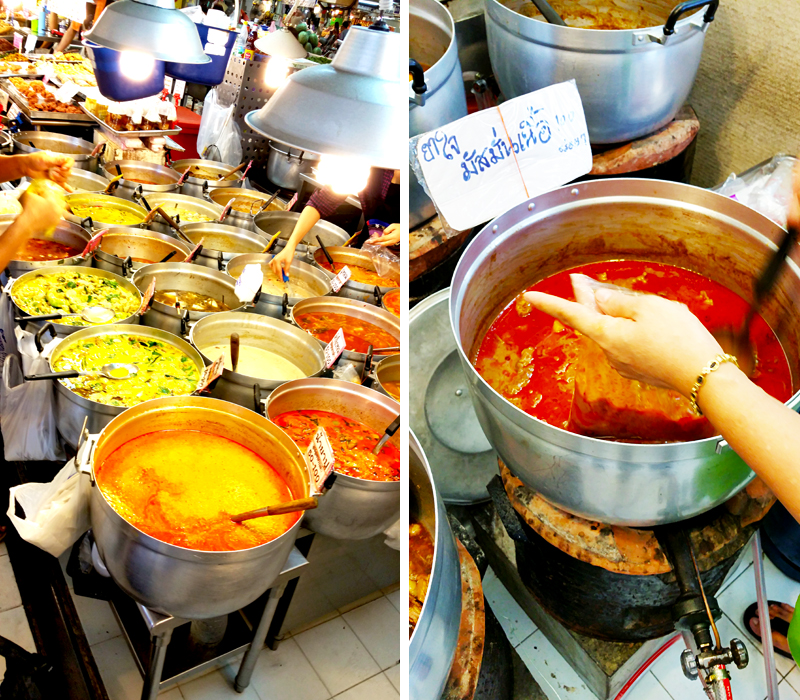
Ran Khao Kaeng
Translated literally without semantic consideration, the term ran khao kaeng (ร้านข้าวแกง) is both incomplete and misleading. Glanced at quickly without a cultural context, ran khao kaeng, due to their ubiquity in Bangkok, often lead visitors into making assumptions that don’t necessarily align with how the locals see them. But when one understands and appreciates ran khao kaeng for what they are—no more and no less—one will see that these humble shops can be anything from a lifesaver to a place of nostalgia and comfort to a manageable space of learning and exploration for visitors with too little time to experience the immense breadth of Thai food.
Let me explain what I mean.
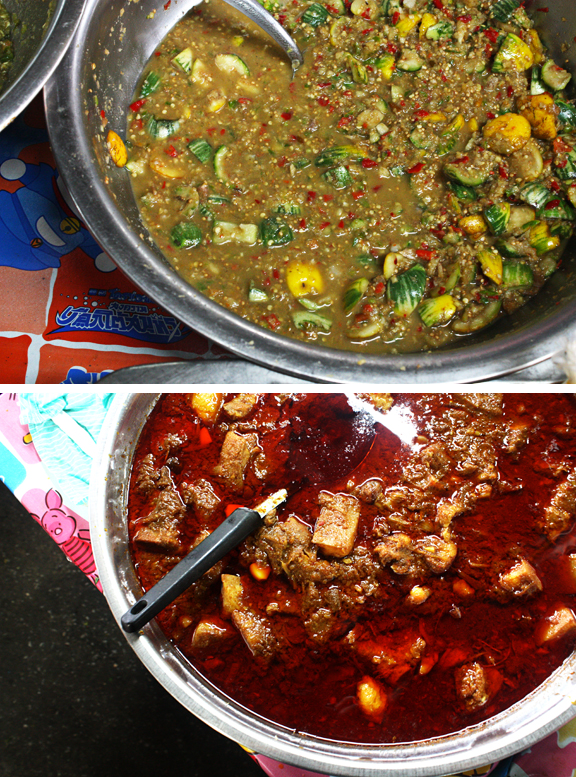
Are ran khao kaeng the places where you go for curry on rice? Well, yes, but that’s not all.
Comprising three words, ran (shop), khao (rice), and kaeng (curry), ran khao kaeng is translated literally as “[a] shop [selling] rice [and] curry.”
The “curry” part of the term “rice-curry shop” often misleads those unfamiliar with the concept into thinking that curries are the only rice accompaniments (read about “rice accompaniments” in Simple Thai Food, pages 33-37) on offer. If you’re familiar with the eating culture of Bangkok, you’re probably rolling your eyes right about now, thanking me for shedding light on a brightly lit area. But, hey, let’s just say I’ve learned not to assume.
This is where it’s helpful to know that synecdoches are just as prevalent in the Thai language as they are in many other languages. Just as the “bread” in “give us today our daily bread” is a synecdoche, representing food in general and not just bread, so also is “kaeng” (curry) in ran khao kaeng a synecdoche, representing all rice accompaniments and not just curries. (In this case, “rice-curry” can even be categorized as a pair of Siamese twins (heh) as well, but we’re on a tangent here.)
Rice, as the name suggests, is the mainstay at any rice-curry shop. This is not surprising as rice is the main component of a typical Thai meal (see more in Simple Thai Food, page 33). Many shops also offer khanom jin (RTGS: khanom chin), the Southeast Asian fermented (often unfermented these days) rice noodles that form a separate category from Chinese-style noodles, as an additional non-rice option of plain, starchy blank canvas. (Khanom jin is traditionally paired with just a few accompaniments—most notably green and red curries—so it’s not as versatile as rice.) You don’t normally find made-to-order one-plate, pre-composed meals, such as noodle soups or stir-fried noodles or even fried rice at a rice-curry shop (unless that shop also offers made-to-order foods, ahan tam sang, which belongs to a completely different food genre).
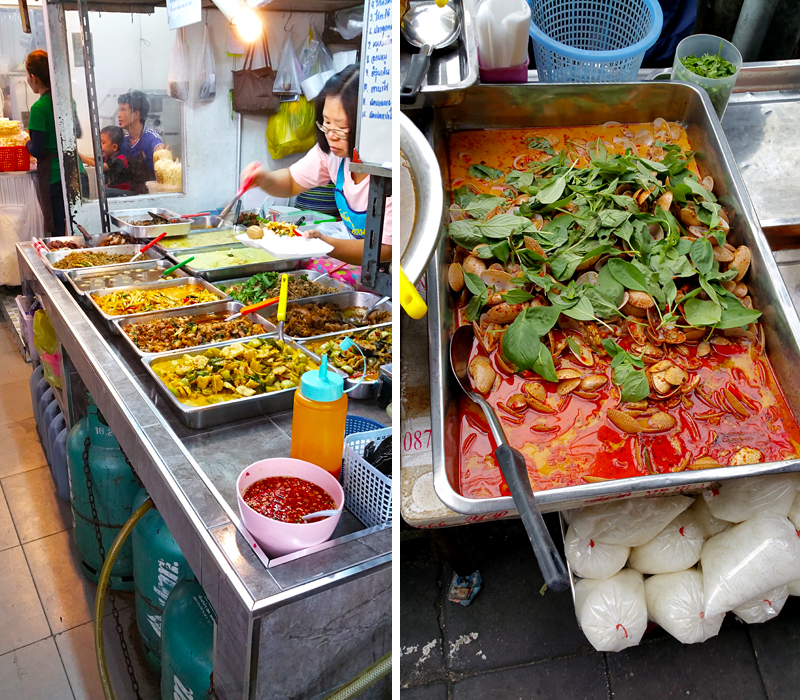
The best food Bangkok has to offer? Nah.
Back in the 70s, when people of my parents’ generation were young professionals, there existed a term “mae ban thung plastic” or “plastic bag housewife” that was used to describe a woman who fed her family with food purchased off the streets (always packed in plastic bags) as opposed to homemade food which was considered superior.
When someone calls you a plastic bag housewife, they’re not thinking you’re modern or efficient or smart; they’re intimating that you’re a wife and/or mother who is desperate or incompetent or irresponsible. The term has now fallen out of use, but back then it was in vogue, and it was always used in a derogatory sense.
The issue of whether it’s sexist or fair to place such expectations on women aside, the fact that this happened—and it’s well documented—tells you that, in the context of Thai society, street food in general hadn’t historically been glamorized by the locals and that Bangkokians hadn’t historically perceived rice-curry shop offerings as being among the finest specimens of their cuisine.
The glorification of cheap street food of Thailand that has been observed in the Western media in recent years has made the locals cock our heads to one side and knit our brows in confusion. And it doesn’t help that while some of us have been doing everything we can to dispel the myth of authenticity and quality being synonymous with rustic locations, there are those who are more than happy to help perpetuate this type of thinking, because they profit from it.
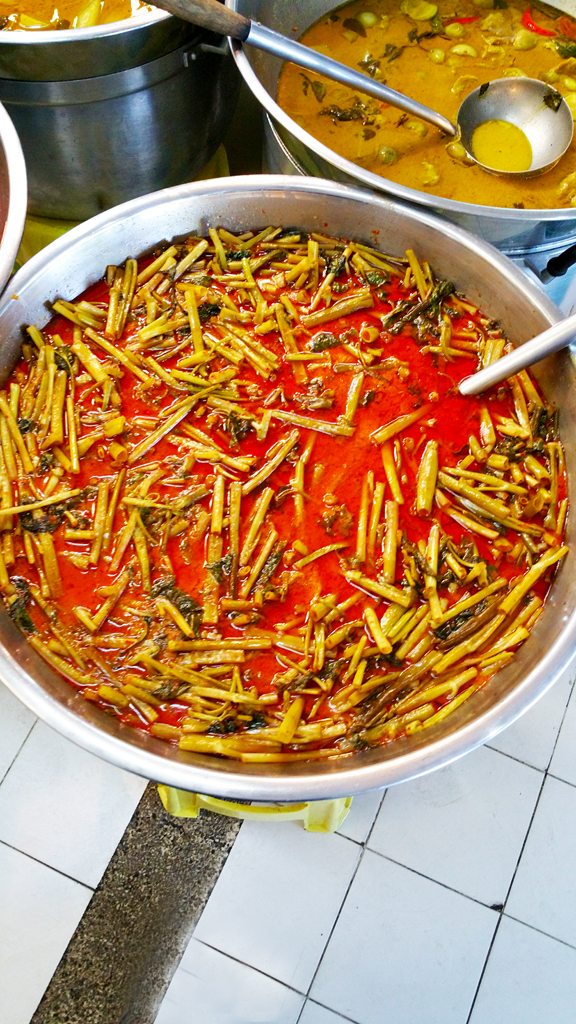
A Bangkokian who grew up in a home where good homemade food was always available in abundance would be able to tell you that most curries at the average rice-curry shop would be less flavorful than what your mother would make at home or that tom kha kai would more often than not be made with the “tail” of coconut milk (Simple Thai Food, page 198) thinned out even further with water. One of my uncles has long sworn off the thin and anemic sour curry from a rice-curry shop (read more about it here). The khai phalo, braised eggs in spiced soy-based broth, in the photo below may look tempting to some. But if you’ve had the old-fashioned khai phalo, braised for hours and hours in broth so flavorful that the seasoning has seeped into the whites and the inner cores of the yolks, you’d know that the kind of khai phalo at most rice-curry shops is nothing to write home about. I can count with one hand the places in Bangkok I have found that make the kind of khai phalo I consider good; all of them are restaurants that serve home-style dishes; none of them is a rice-curry shop.
Do good rice-curry shops exist in Bangkok? Yes. But mediocre ones are far, far greater in number. And fewer still are the excellent ones.
However, just as Golden Corral and restaurants like it have their place in the American eating culture, rice-curry shops also have their place in Bangkok’s eating culture. They exist to provide quick, inexpensive meals; they fill the gap that no other food establishments in the city have attempted to. Rice-curry shops are not the antithesis of what is good and decent about Thai cuisine; they’re not the gift from heaven that some travel writers paint them as either. Bangkokians know what they are and what they offer, and they set their expectations accordingly.
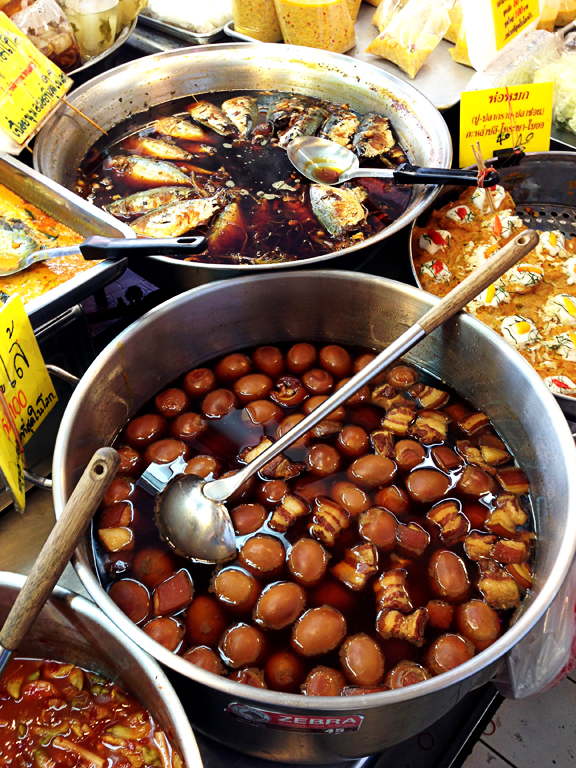
However, when one understands and appreciates these rice-curry shops from the locals’ perspective, one can see that, in their limitations, rice-curry shops are a welcome part of the Bangkok’s food scene. Here’s why.
1. They’re convenient and affordable.
Whatever benefits you get out of fast-food restaurants in the Western countries are pretty much the same benefits Bangkokians get out of rice-curry shops. Many office workers eat breakfast and lunch there; they may even buy food to-go on the way home as well. Cheap meals. All day availability. Easy access no matter where you are. Wide variety of dishes to choose from. Rotating menus. What’s not to like? Also, what would school and office cafeterias be without rice-curry shops?
In the past, the religious ones among Buddhist Bangkokians would wake up before dawn to prepare homemade dishes to offer to the monks who would do their morning alms rounds in the neighborhoods within walking radius of their temples. These days, the foods offered to the monks are usually purchased from the nearest rice-curry shop.
The fact that many young professionals in Bangkok these days live in a condo with just a small kitchen, with a one- or two-burner stove and a wimpy exhaust fan, means most of them don’t cook. Rice-curry shops come in handy.
2. They’re a haven for those away from home.
The type of food that a typical rice-curry shop offers is home-style food. This makes rice-curry shops perfect for those who have long been away from “home.” Literally, this includes transplants who still have their roots and family members in other parts of the country. There are many rice-curry shops in Bangkok that specialize in southern dishes, northeastern dishes, and—this is rare, however—northern dishes. If you look in the right places, regardless of what regional cuisine you grew up eating, you would be able to find most of the dishes from home in Bangkok. Figuratively, this also applies to people who no longer live with their parents. Yearning for the taste of home but not being able to cook, they rely on rice-curry shop offerings for the most affordable substitutes to home-cooked dishes. Same for those who grew up in a household where nobody cooks; rice-curry shops offer an inexpensive, convenient way to gain exposure to home-style cooking which they’ve missed out on.
3. They’re a great place for visitors to explore and discover Thai dishes.
If you’re a visitor to Bangkok who loves but is new to Thai food, a rice-curry shop, with its vast spread of dishes on display, is a place where you can be exposed to many dishes at once most of which are not found on the menus of Thai restaurants outside Thailand.
A rice-curry shop is also a great place where you can practice composing a samrap (Simple Thai Food, page 33) the way the Thais would—with various flavors, textures, and consistencies. This is where you’ll notice how a particular dish is served and with what sides. For example, you may notice that certain vegetable dishes are served with one type of chili relish but not with another. Etc.
What’s more, as a visitor, unless you have Bangkokian friends who cook at home, it’s highly unlikely that you’ll get to experience home-style Thai cooking—a world that’s often opaque to non-locals. Rice-curry shop offerings are the closest you’ll ever get to the kind of food that’s found more in a typical Bangkokian home than a restaurant. When I first came to the United States, I, too, learned a lot about American food from all the trips to Golden Corral.
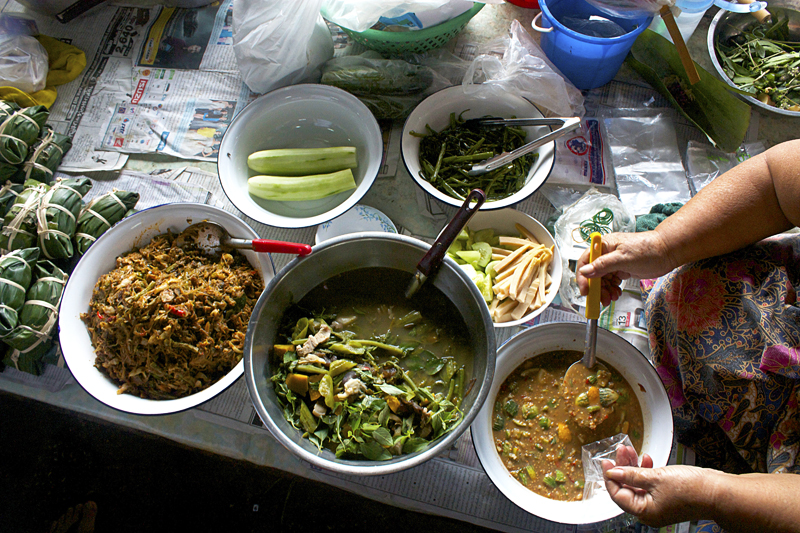
How does it work at a rice-curry shop?
Easy.
First, look around to see if it’s the kind of rice-curry shop that only sells food to-go or the kind that also allows you to eat in. If it’s a to-go only situation, simply point at what you want and they’ll put it in a bag for you. It would be a good idea to buy some rice from them too since most of the dishes are meant to be eaten with rice. In this scenario, each rice accompaniment you buy will be placed separately in either a plastic bag or a Styrofoam box. The rice will be packed separately as well. The assumption is that you’ll take all of these things home and reheat and serve them family-style, i.e. with the various rice accompaniments in separate containers in the center to share and the rice on each person’s personal plate.
If they have an eating area, you have two choices.
1. You can dine fast-food style, meaning you ask for rice accompaniments (typically 2 complementary different dishes) on top of rice thereby composing a one-plate meal (Simple Thai Food, page 119) of your own. (Think of it as a mini-samrap on a plate.) If you’d like a soup—be it a mild clear soup or a spicy one like tom yam—the more common practice is to have it place in a small single-serving bowl separately since spooning it on top of the rice next to another rice accompaniment will just make everything wet and sloppy.
2. You can have them put the rice accompaniments in separate bowls. This is what people often do when they eat with their friends: they order multiple complementary rice accompaniments. Each person has his/her own plate of rice, and everybody shares the rice accompaniments in the center. When you dine family-style like this, you usually end up paying considerably more (then again, with this being at a rice-curry shop, chances are you’re not going to lose your life savings on a meal).
At most rice-curry shops, you pay after you’ve finished the meal.
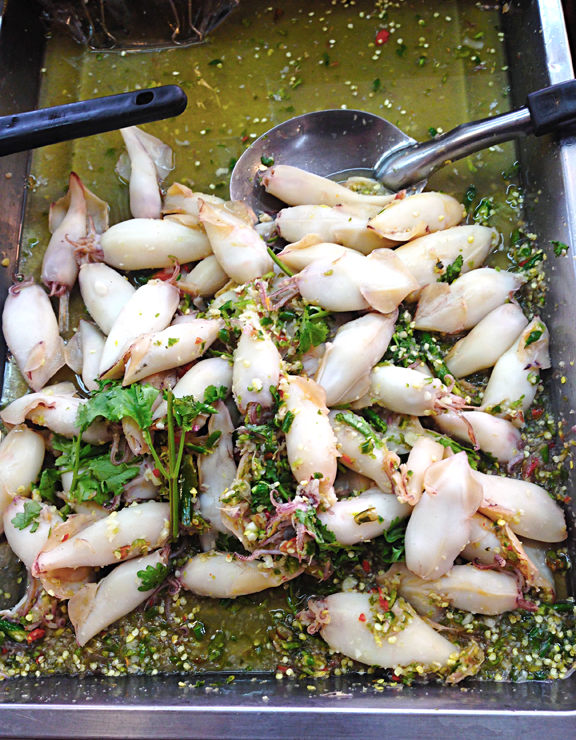
My favorite rice-curry shops in the city?
With excellent rice-curry shops being so hard to find in the city, it helps to know where to go. In my opinion, the majority of rice-curry shops on the sidewalks or inside wet markets are usually mediocre. You want higher quality rice-curry shops, you need to prepare to pay more. Even among rice-curry shops, which are usually very affordable, you get what you pay for.
From what I’ve noticed, the measuring rod with which Bangkokians tend to use to judge how good a rice-curry shop is how close its offerings are to home cooking (the same criterion they use to judge pinto services). I use the same criterion.
The list of my favorite rice-curry shops in Bangkok is longer than this. Here are just a few that are easier to travel to than others, in no particular order:
1. Kanchana (กาญจนา) on the portion of Charoen Krung Road between Sathon and Silom (just a short distance away from Saphan Taksin BTS), opposite Robinson Bang Rak.
2. Jek Pui (ข้าวแกงเจ๊กปุ้ย), aka the Musical Chair rice-curry shop, on Mangkon Road in Chinatown (Tel. (02)2225229, (081)8547110). Note: Their kaeng kari (“yellow curry”) either with beef and beef tendon or pork with winter melon is among the things you shouldn’t miss.
3. Jio (จิ๋ว), near the entrance of Charoen Krung 43, opposite the Central Post Office (Tel. (084)6405775). Note: Jio isn’t known as a rice-curry shop; in fact, it’s known for halal dishes. But they do offer prepared traditional Thai dishes. Their catfish green curry (kaeng khiao wan pla duk) is among the best—if not the best—in the city I’ve found to date.
4. Krua OV, 199 Phichai Road (Tel. (02)2431980) Note: This place is more of a restaurant/cafeteria than a full-fledged rice-curry shop, but they also have a section where you can order rice topped with prepared dishes, spooned out of chafing dishes. Don’t miss their crispy fish phat phrik khing and kaeng kari, aka “yellow curry,” with chicken are really good. Their khai phalo is not the best I’ve had, but very good.
5. Som Song Pochana (สมทรงโภชนา) in Bang Lamphu area (Tel. (080)4443110) Note: you need to end your meal with their pandan-flavored sorghum pudding with salted coconut cream.
6. Phu Yai Lee (ข้าวแกงผู้ใหญ่ลี), 10 Soi Sap Sin, in Wang Burapha (Tel. (02)2223255) Note: Don’t miss their spicy frog stir-fry and spicy catfish stir-fry.
7. Im Aroi (ข้าวแกงอิ่มอร่อย) inside Lung Perm Market behind Thai Airways International Headquarters on Vibhavadi Rangsit Road.
In USA, try:
Khao Kang 76-20 Woodside Ave, Elmhurst, NY 11373 (Tel. (718) 806-1807)
Immm Rice & Beyond 4949 N Broadway St, Chicago, IL 60640 (Tel. (773) 293-7378)
_________________________________________
Related stories:
Baan Varnakovida
Ganda
Pinto By Chak
How to eat Thai chili relish
Bangkok Kitchen







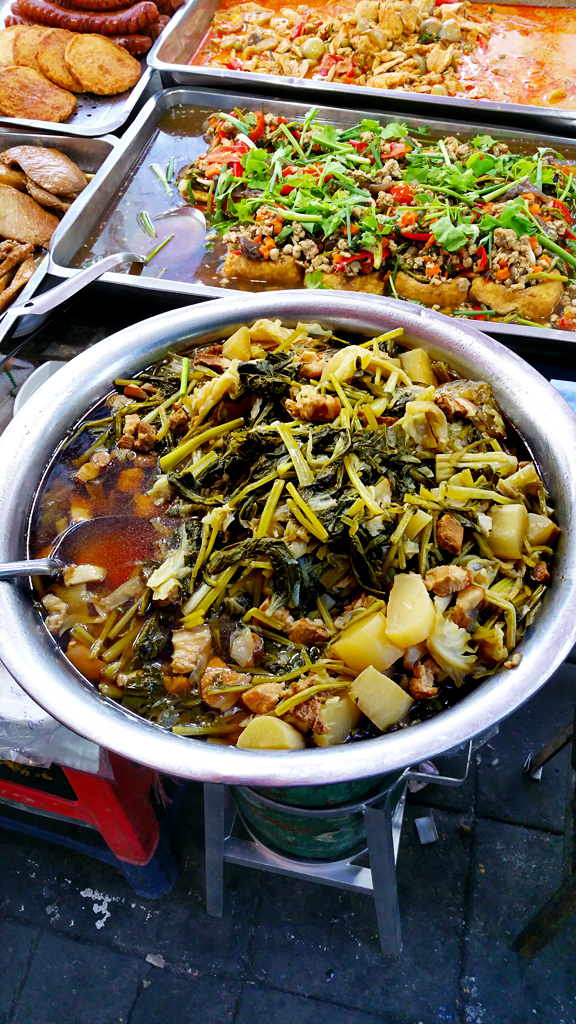

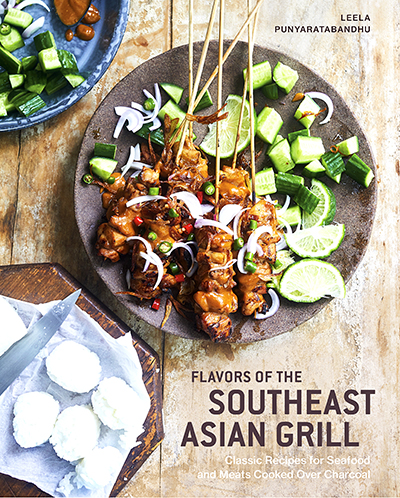
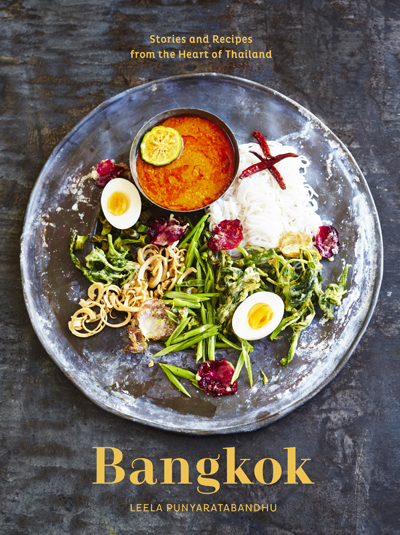
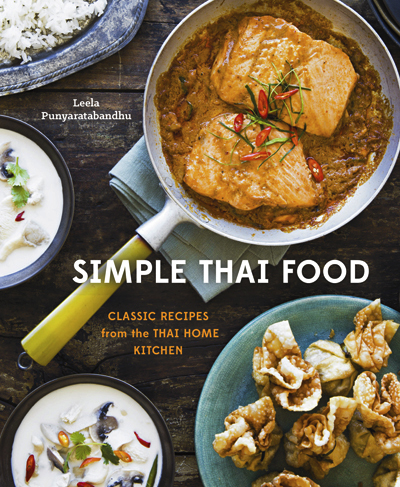
[…] (This post assumes that you have read its prerequisite.) […]